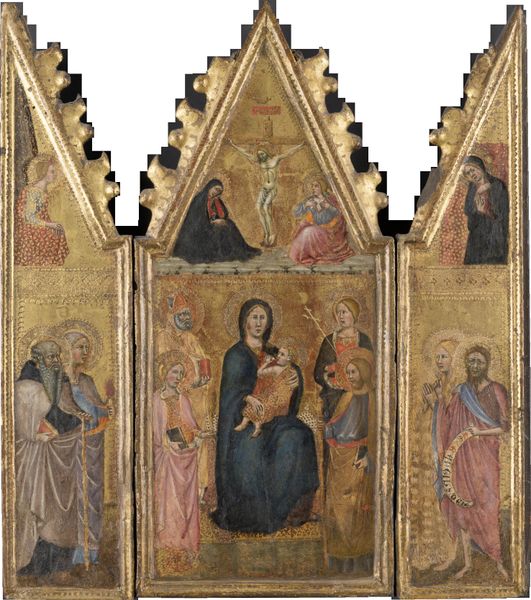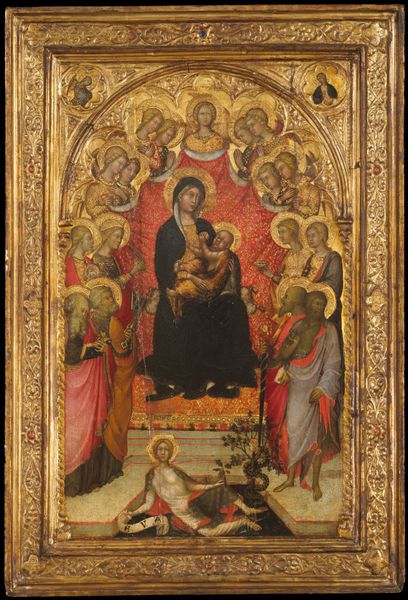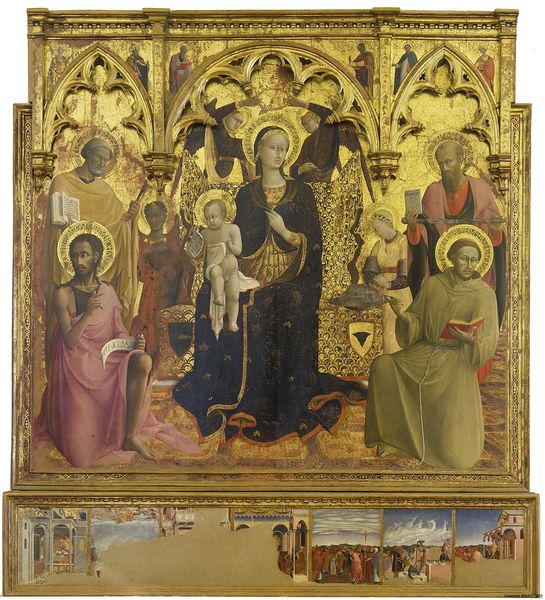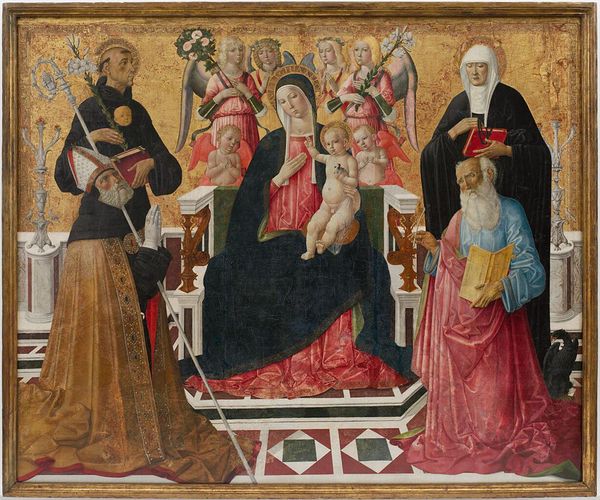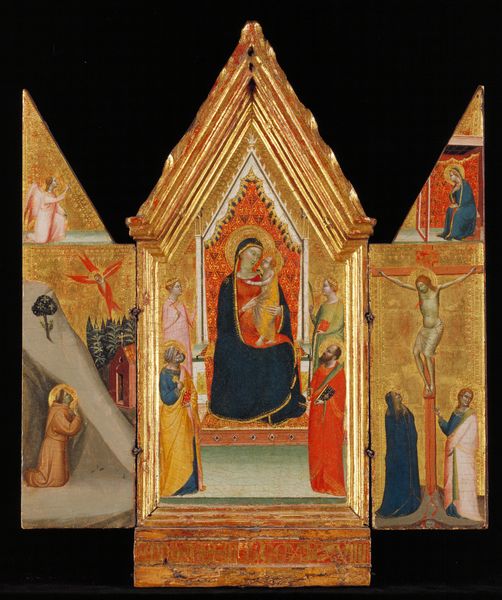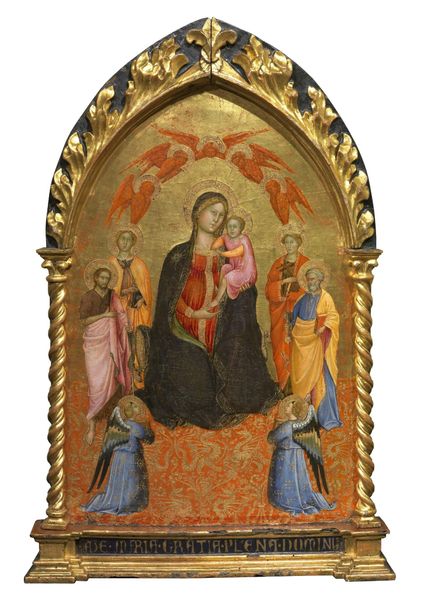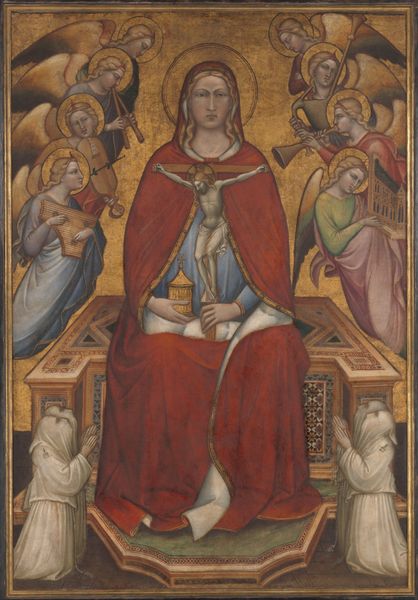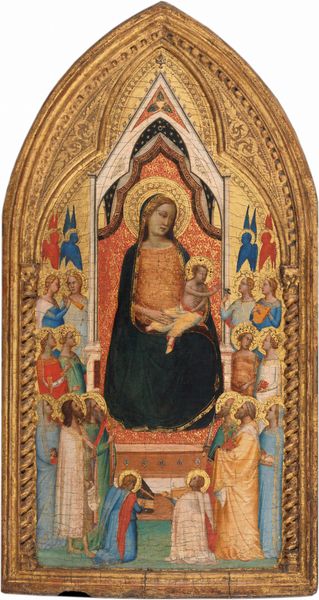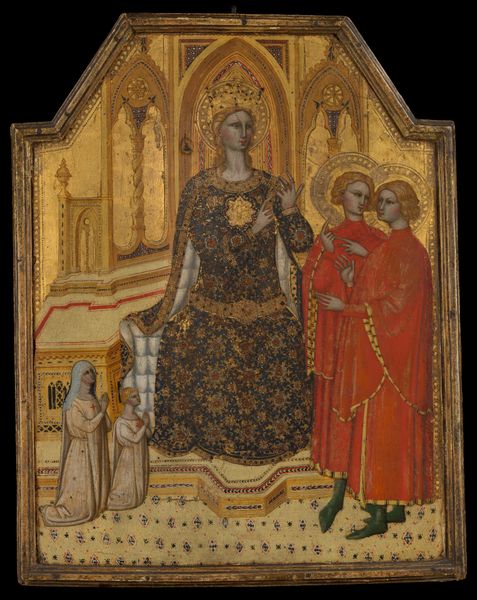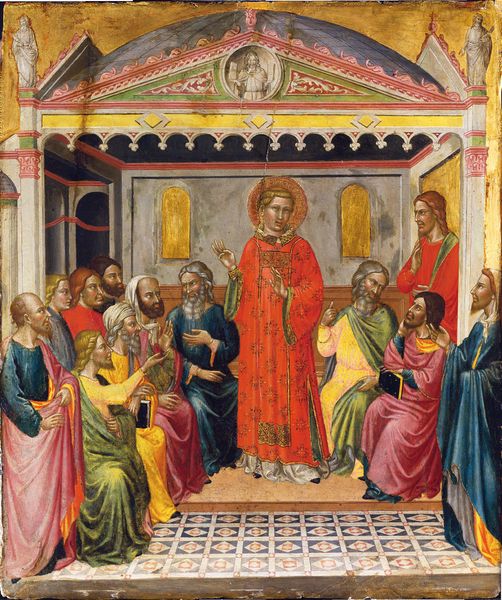
tempera, painting
#
portrait
#
tempera
#
painting
#
figuration
#
oil painting
#
group-portraits
#
12_15th-century
#
history-painting
#
italian-renaissance
#
early-renaissance
Dimensions: 80.8 x 67.7 x min. 2.6 cm
Copyright: Public Domain
Curator: Right, so what’s grabbing you first about this piece? For me, it's all the moody drama—feels very serious. Editor: Agreed, there’s an austere quality. Before we dive in, let’s give folks some context. This is "Virgin and Child Enthroned with Saints" by Neri di Bicci, painted around 1475, using tempera on wood. It currently resides at the Städel Museum. What immediately strikes me is its departure from later Renaissance depictions; there is a formality, almost a solemnity. Curator: Yeah, the colors are much darker than I'd expect. The Madonna's robe almost swallows her. It’s more gothic grandeur than high-Renaissance glow, right? I mean look at her gaze! Is that tenderness, or is she already resigned to, you know, what's coming? Editor: Interesting take! I read her expression more as emblematic of idealized motherhood in the patriarchal framework of 15th-century Florence, you know. We are looking at a carefully constructed image intended to reinforce religious and social hierarchies. She isn't necessarily a "real" person, but an archetype, representing power, piety, and subservience all at once. The surrounding saints—likely local figures of importance at the time—only reinforce that power structure. Curator: Oh, absolutely. And speaking of, notice how crowded it is, compositionally? Everyone's crammed in around the throne, like they're desperate for a selfie with the divine influencer. Makes me wonder who funded this piece, trying to cozy up to God through art. Editor: Well, patronage was everything at the time. Remember, these pieces were frequently commissioned by wealthy families or religious orders to demonstrate their devotion and secure social standing. But the tempera technique used is also important to note here. It provides an interesting textural quality. See how it captures the folds of the fabric in sharp relief, while imparting an almost jewel-like luminosity to the halos. Curator: Agreed, it is gorgeous and so very ornate, and even if it reinforces specific hierarchies, I also see it as kind of comforting. The world was messy and confusing, and these paintings created a sense of stability—the solid, unshakeable Madonna watching over you. Editor: Stability at the cost of individual expression, perhaps? Still, analyzing this piece allows us to trace that complicated path artists and patrons walked between traditional devotion and the budding Renaissance humanist values that questioned authority, pushing Western art toward individual emotionality. Curator: Right. It’s a gorgeous snapshot into that very shift. Editor: Indeed. Art like this always tells complex, multifaceted stories if you are ready to listen closely.
Comments
No comments
Be the first to comment and join the conversation on the ultimate creative platform.
